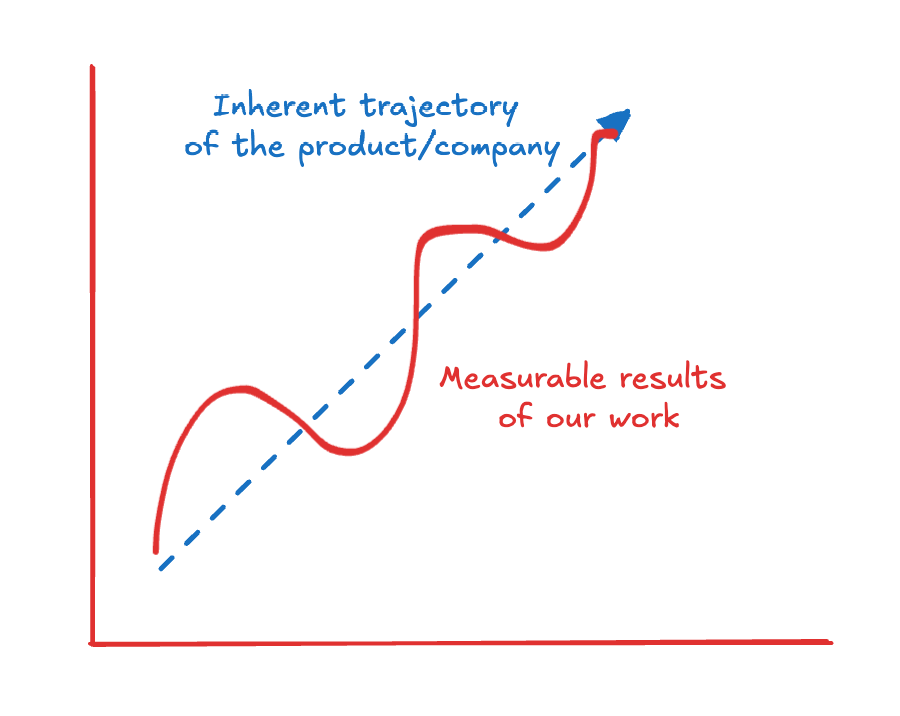Chase environments that make your goals inevitable.
When things go wrong, sometimes it is more powerful to change the environment, rather than ourselves. Look to the bigger picture of people and process when evaluating how to solve a problem.
At Instagram, my team and I used to joke that while we like to think we’re actively shaping the future of Instagram, all we’re really doing is introducing random variation on a pre-determined trajectory. I often drew the following chart on the whiteboard for new team members:
The takeaway wasn’t about lack of control or agency. It is about humility.
We …


